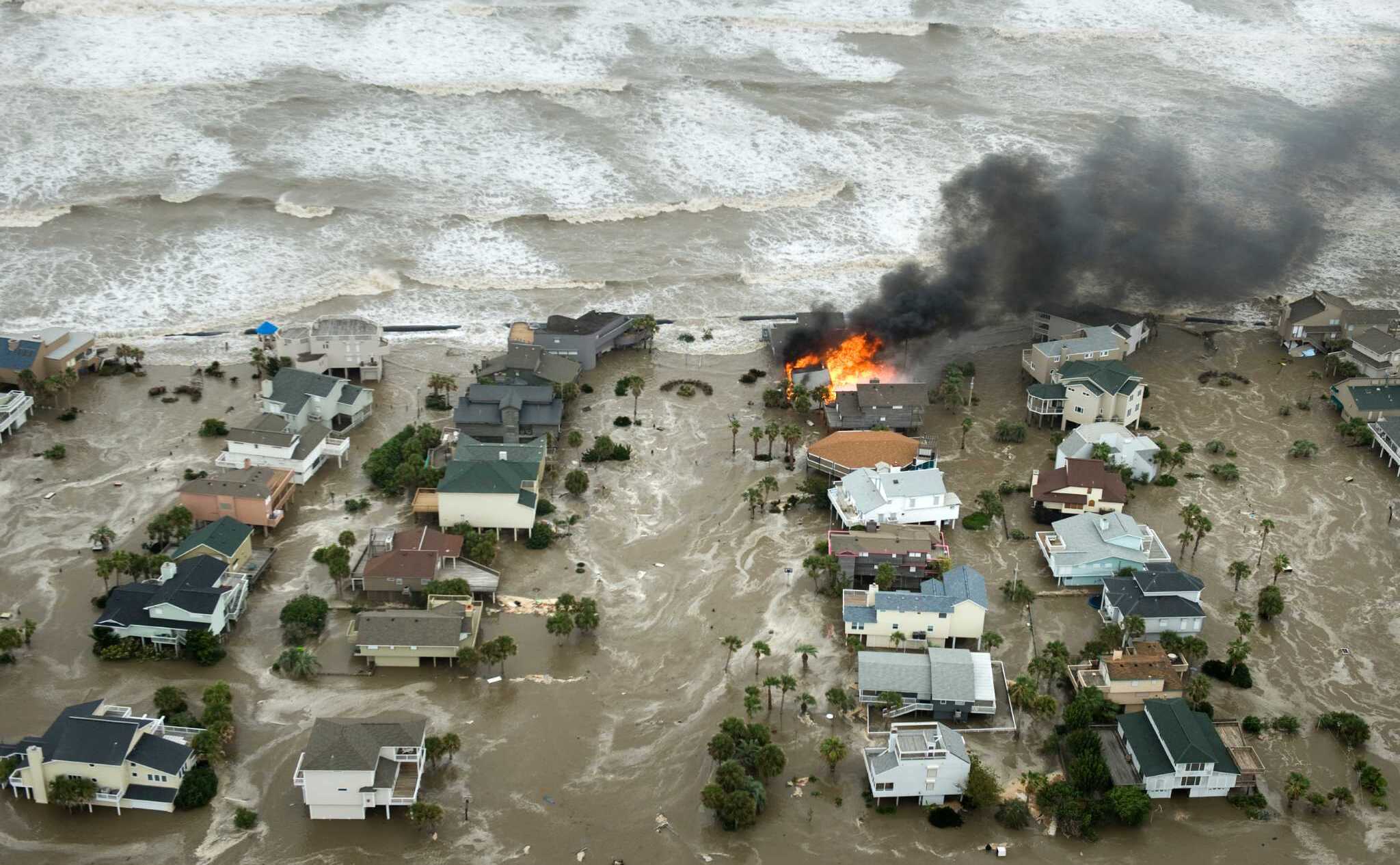
Hurricane Ike was a powerful and destructive storm that made landfall in the Gulf Coast region of the United States in 2008. This Category 4 hurricane wreaked havoc, causing widespread devastation and leaving a lasting impact on the affected areas. From its formation in the tropical Atlantic to its landfall and aftermath, Hurricane Ike's journey was marked by significant events and consequences. In this article, we will delve into 18 fascinating facts about Hurricane Ike, shedding light on its strength, impact, and historical significance. By exploring these facts, we can gain a deeper understanding of the sheer force and destructive potential of hurricanes, as well as the resilience of communities in the face of such natural disasters. Join us on this journey as we uncover intriguing details about one of the most notable hurricanes in recent history.
Key Takeaways:
- Hurricane Ike, a powerful storm, caused widespread destruction and prompted large-scale relief efforts, highlighting the resilience of communities in the face of natural disasters.
- The impact of Hurricane Ike sparked discussions on climate change and the need for proactive preparedness and resilience measures in vulnerable coastal regions.
Hurricane Ike made landfall as a Category 2 hurricane in Texas on September 13, 2008.
Hurricane Ike, one of the most destructive storms in U.S. history, struck the Texas coast with powerful winds and a devastating storm surge. The hurricane's impact was felt across the Gulf Coast, causing widespread destruction and leaving a lasting mark on the region.
It was the third-costliest hurricane to ever make landfall in the United States.
The extensive damage caused by Hurricane Ike resulted in it being ranked as the third-costliest hurricane in U.S. history, with estimated damages totaling over $30 billion. The aftermath of the hurricane led to extensive recovery and rebuilding efforts in the affected areas.
Hurricane Ike affected several countries, including the Bahamas, Haiti, and Cuba.
Before reaching the United States, Hurricane Ike brought destructive winds and heavy rainfall to several countries in the Caribbean, causing significant damage and loss of life. The storm's wide-reaching impact underscored its strength and destructive potential.
The hurricane caused significant storm surge along the Texas coast.
The powerful storm surge generated by Hurricane Ike inundated coastal areas, leading to widespread flooding and destruction. The surge, combined with the hurricane's strong winds, resulted in extensive damage to homes, infrastructure, and natural habitats along the Texas coastline.
Hurricane Ike resulted in widespread power outages across the Gulf Coast.
The hurricane's strong winds and destructive force caused extensive power outages across the Gulf Coast, disrupting daily life for millions of residents. The widespread loss of electricity added to the challenges faced by communities in the aftermath of the storm.
It was the ninth named storm, fifth hurricane, and third major hurricane of the 2008 Atlantic hurricane season.
Hurricane Ike's development and intensification contributed to the active 2008 Atlantic hurricane season, which saw several significant storms impacting the United States and the Caribbean. The storm's trajectory and impact highlighted the need for preparedness and resilience in vulnerable coastal regions.
Hurricane Ike prompted one of the largest search-and-rescue operations in U.S. history.
The widespread devastation caused by Hurricane Ike necessitated a massive search-and-rescue effort to locate and assist individuals affected by the storm. The coordinated response and rescue operations demonstrated the resilience and compassion of communities in the face of adversity.
The hurricane caused extensive damage to infrastructure, including roads, bridges, and buildings.
The destructive force of Hurricane Ike resulted in widespread damage to critical infrastructure, disrupting transportation networks and essential services. The long-term impact of the storm underscored the need for resilient infrastructure and comprehensive disaster preparedness measures.
Hurricane Ike led to the displacement of thousands of residents in the affected areas.
The widespread destruction caused by the hurricane forced thousands of residents to evacuate their homes and seek shelter in safer locations. The displacement of communities highlighted the urgent need for effective emergency response and support for those impacted by natural disasters.
It brought heavy rainfall and flooding to parts of the Midwest and Mid-Atlantic regions.
In addition to its impact on the Gulf Coast, Hurricane Ike brought heavy rainfall and flooding to inland areas, affecting communities in the Midwest and Mid-Atlantic regions. The storm's far-reaching influence emphasized the interconnectedness of weather systems and the potential for widespread impact.
Hurricane Ike resulted in significant environmental damage, including coastal erosion and habitat destruction.
The hurricane's powerful winds and storm surge caused extensive coastal erosion and habitat destruction, impacting fragile ecosystems and wildlife habitats. The environmental repercussions of the storm highlighted the importance of conservation and sustainable coastal management practices.
It prompted large-scale relief and recovery efforts in the aftermath of the storm.
The aftermath of Hurricane Ike spurred large-scale relief and recovery efforts, with government agencies, non-profit organizations, and volunteers working together to support affected communities. The collaborative response underscored the resilience and solidarity of individuals and organizations in times of crisis.
Hurricane Ike underscored the importance of preparedness and resilience in the face of natural disasters.
The impact of Hurricane Ike served as a stark reminder of the need for proactive preparedness and resilience measures to mitigate the impact of future natural disasters. The lessons learned from the storm's impact informed efforts to enhance disaster response and community resilience in vulnerable regions.
It resulted in significant economic losses for businesses and industries in the affected areas.
The widespread damage caused by Hurricane Ike had a profound economic impact, resulting in significant losses for businesses and industries in the affected regions. The storm's disruption to economic activities highlighted the need for comprehensive risk management and business continuity planning.
Hurricane Ike prompted advancements in hurricane forecasting and emergency response capabilities.
The challenges posed by Hurricane Ike prompted advancements in hurricane forecasting and emergency response capabilities, leading to improved preparedness and response measures for future storms. The storm's impact contributed to ongoing efforts to enhance the accuracy and timeliness of weather forecasts and warnings.
It served as a catalyst for community resilience and long-term recovery efforts.
In the wake of Hurricane Ike, affected communities rallied together to rebuild and recover, demonstrating resilience and determination in the face of adversity. The storm served as a catalyst for long-term recovery efforts and community-driven initiatives to enhance preparedness and disaster resilience.
Hurricane Ike left a lasting impact on the Gulf Coast region and the communities it affected.
The enduring impact of Hurricane Ike on the Gulf Coast region and the communities it touched serves as a reminder of the resilience and strength of individuals and communities in the face of natural disasters. The storm's legacy continues to shape disaster preparedness and recovery efforts in vulnerable coastal areas.
The hurricane's impact sparked discussions on climate change and its influence on extreme weather events.
The far-reaching impact of Hurricane Ike sparked discussions on the influence of climate change on the frequency and intensity of extreme weather events, prompting renewed efforts to address environmental challenges and build climate resilience. The storm's impact contributed to ongoing dialogue on the intersection of climate science and disaster preparedness.
Hurricane Ike, a powerful and destructive storm, made a lasting impact on the Gulf Coast and the communities it affected. The hurricane's trajectory, from its development as the ninth named storm of the 2008 Atlantic hurricane season to its landfall as a Category 2 hurricane in Texas, underscored the need for proactive preparedness and resilience in the face of natural disasters. The storm's widespread impact, including extensive damage to infrastructure, displacement of residents, and environmental repercussions, prompted large-scale relief and recovery efforts, highlighting the resilience and solidarity of individuals and organizations in times of crisis. The enduring legacy of Hurricane Ike serves as a reminder of the importance of community resilience, long-term recovery efforts, and ongoing dialogue on climate change and its influence on extreme weather events.
Conclusion
In conclusion, Hurricane Ike stands as a powerful reminder of nature's immense force and the profound impact it can have on our lives. The storm's staggering size, destructive power, and lasting effects serve as a testament to the importance of preparedness and resilience in the face of natural disasters. By understanding the facts and lessons gleaned from Hurricane Ike, we can better equip ourselves to mitigate the impact of future storms and safeguard our communities. It's crucial to heed the warnings of experts, prioritize safety measures, and work together to build a more resilient and adaptive society. Through knowledge, preparation, and collective action, we can strive to minimize the devastation wrought by such formidable natural forces.
FAQs
Q: What were the main causes of Hurricane Ike's extensive damage?
A: Hurricane Ike's significant impact was primarily attributed to its massive size, strong winds, and the accompanying storm surge, which inundated coastal areas and caused widespread flooding and destruction.
Q: How did Hurricane Ike affect the environment?
A: The storm's aftermath resulted in substantial environmental damage, including the destruction of habitats, loss of vegetation, and contamination of water sources, impacting the delicate balance of ecosystems and wildlife in the affected regions.
Was this page helpful?
Our commitment to delivering trustworthy and engaging content is at the heart of what we do. Each fact on our site is contributed by real users like you, bringing a wealth of diverse insights and information. To ensure the highest standards of accuracy and reliability, our dedicated editors meticulously review each submission. This process guarantees that the facts we share are not only fascinating but also credible. Trust in our commitment to quality and authenticity as you explore and learn with us.


